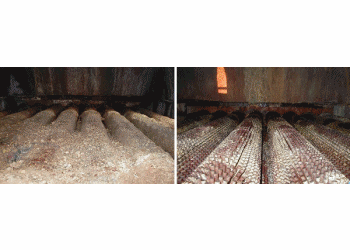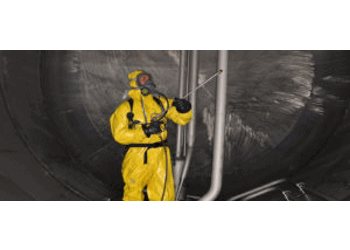Boiler heat exchanger Baton Rouge Louisiana
Boiler heat exchanger Baton Rouge Louisiana

Boiler heat exchanger Baton Rouge Louisiana
Have you ever watched wisps of smoke drifting from smokestacks and wondered how much energy they’re uselessly pumping into the air? Maybe less than you might think! Saving energy is a huge and costly problem for factory bosses and it’s one reason they often install devices called heat exchangers to salvage as much heat as possible from waste gases. Heat exchangers have lots of other familiar uses too. Engines in cars, ships, and planes use heat exchangers to work more efficiently, and if you have a refrigerator or an air-conditioner in your home, those are using heat exchangers too. So what exactly are heat exchangers and how do they work? Let’s take a closer look! Boiler heat exchanger Baton Rouge Louisiana.
Heat exchangers are used in many engines and machines to improve their efficiency. Boiler heat exchanger Baton Rouge Louisiana.
What is a heat exchanger?
Suppose you have a gas central heating furnace (boiler) that heats hot-water radiators in various rooms in your home. It works by burning natural gas, making a line or grid of hot gas jets that fire upward over water flowing through a network of pipes. Boiler heat exchanger Baton Rouge Louisiana. As the water pumps through the pipes, it absorbs the heat energy and heats up. Boiler heat exchanger Baton Rouge Louisiana. This arrangement is what we mean by a heat exchanger: the gas jets cool down and the water heats up.
Boiler heat exchanger Baton Rouge Louisiana.
A heat exchanger is a device that allows heat from a fluid (a liquid or a gas) to pass to a second fluid (another liquid or gas) without the two fluids having to mix together or come into direct contact. If that’s not completely clear, consider this. In theory, we could get the heat from the gas jets just by throwing cold water onto them, but then the flames would go out! The essential principle of a heat exchanger is that it transfers the heat without transferring the fluid that carries the heat. Boiler heat exchanger Baton Rouge Louisiana.
Diagram showing how a simple shell and tube heat exchanger works.
Boiler heat exchanger Baton Rouge Louisiana.
How does a simple heat exchanger work?
A hot fluid (shown in red) flows through a tube coiled inside a larger shell through which another, colder fluid (shown in blue) is running in the opposite direction. Heat is exchanged by the fluids: the hot fluid cools down and the cold fluid warms up, without them actually coming into contact and mixing. This is a simplified example of a shell and tube exchanger: generally, heat exchangers of this design have many thin tubes running through a large shell. Boiler heat exchanger Baton Rouge Louisiana.
What are heat exchangers used for?
Geothermal pool heat exchanger.
You can see heat exchangers in all kinds of places, usually working to heat or cool buildings or helping engines and machines to work more efficiently. Refrigerators and air-conditioners, for example, use heat exchangers in the opposite way from central heating systems: they remove heat from a compartment or room where it’s not wanted and pump it away in a fluid to some other place where it can be dumped out of the way.
Boiler heat exchanger Baton Rouge Louisiana.

Boiler heat exchanger Baton Rouge Louisiana
A heat pump extracts heat from a natural geothermal hot spring, used to heat buildings at Hot Springs Lodge and Pool in Glenwood Springs, Colorado. The exchanger is the algae-covered plate full of copper tubes in the center of the water.
Boiler heat exchanger Baton Rouge Louisiana.
In power plants or engines, exhaust gases often contain heat that’s heading uselessly away into the open air. That’s a waste of energy and something a heat exchanger can certainly reduce (though not eliminate entirely—some heat is always going to be lost). The way to solve this problem is with heat exchangers positioned inside the exhaust tailpipes or smokestacks. As the hot exhaust gases drift upward, they brush past copper fins with water flowing through them. Boiler heat exchanger Baton Rouge Louisiana.The water carries the heat away, back into the plant. There, it might be recycled directly, maybe warming the cold gases that feed into the engine or furnace, saving the energy that would otherwise be needed to heat them up. Or it could be put to some other good use, for example, heating an office near the smokestack. Boiler heat exchanger Baton Rouge Louisiana.
Diagram showing how a shower heat exchanger/heat recovered works.
In buses, the fluid used to cool down the diesel engine is often passed through a heat exchanger and the heat it reclaims is used to warm cold air from outside that is pumped up from the floor of the passenger compartment. That saves the need for having additional, wasteful electric heaters inside the bus. A car radiator is another kind of heat exchanger. Boiler heat exchanger Baton Rouge Louisiana. Water that cools the engine flows through the radiator, which has lots of parallels, aluminum fins open to the air. As the car drives along, cold air blowing past the radiator removes some of the heat, cooling the water and heating the air and keeping the engine working efficiently. The radiator’s waste heat is used to heat the passenger compartment, just like on a bus.
Boiler heat exchanger Baton Rouge Louisiana.
If you have an energy-efficient shower, it might have a heat exchanger installed in the wastewater outlet. As the water drips past your body and down the plug, it runs through the copper coils of a heat exchanger. Boiler heat exchanger Baton Rouge Louisiana. Meanwhile, cold water that’s feeding into the shower to be heated pumps up past the same coils, not mixing with the dirty water but picking up some of its waste heat and warming slightly—so the shower doesn’t need to heat it so much. Boiler heat exchanger Baton Rouge Louisiana.
How does a shower waste-water heat exchanger work?
Hot outgoing waste-water warms the incoming cold water, reducing the energy you need to get the water hot and making the whole thing more efficient. Boiler heat exchanger Baton Rouge Louisiana.
Types of heat exchangers
All heat exchangers do the same job—passing heat from one fluid to another—but they work in many different ways. The two most common kinds of the heat exchanger are the shell-and-tube and plate/fin. In shell and tube heat exchangers, one fluid flows through a set of metal tubes while the second fluid passes through a sealed shell that surrounds them. That’s the design shown in our diagram up above. Boiler heat exchanger Baton Rouge Louisiana. The two fluids can flow in the same direction (known as parallel flow), in opposite directions (counter flow or counter-current), or at right angles (cross flow). Boilers in steam locomotives work this way. Plate/fin heat exchangers have lots of thin metal plates or fins with a large surface area (because that exchanges more heat more quickly); heat exchangers in gas furnaces (gas boilers) work this way. Boiler heat exchanger Baton Rouge Louisiana.
Stainless steel heat exchanger from a nuclear plant.
Fins on a heat exchanger.
Boiler heat exchanger Baton Rouge Louisiana.
Two types of heat exchanger. Left: A shell and tube exchanger from the Savannah River nuclear plant in South Carolina, United States. There are lots of tubes in this one and they’re easy to see. Photo by courtesy of US Department of Energy (DOE). Right: The plate and fin heat exchanger from inside a gas central heating boiler/furnace. Boiler heat exchanger Baton Rouge Louisiana.

Boiler heat exchanger Baton Rouge Louisiana
Heat exchangers used to minimize heat losses from buildings, engines, and machines are sometimes called recuperators or regenerators. Boiler heat exchanger Baton Rouge Louisiana.
These are two quite different things.
A recuperator is typically used to capture heat that would otherwise be lost, for example, as stuffy air is ventilated from a building: cold, incoming fluid is channeled in the opposite direction to warm, outgoing fluid to minimize the heat loss. The two fluids flow through separate channels, remain separate, and do not mix. Since incoming and outgoing fluids move in opposite directions, recuperators are examples of counterflow heat exchangers. The heat exchanger in a heat-recovery ventilation (HRV) system is an everyday example of a recuperator. Boiler heat exchanger Baton Rouge Louisiana.
Simplified diagram showing the basic heat exchange in a heat recovery ventilation (HRV or ERV) system.
Boiler heat exchanger Baton Rouge Louisiana.
An example of a recuperator heat exchanger working in a heat-recovery ventilation (HRV) system. Warm stuffy air flowing out of the building (orange pipe slanting from top right to bottom left) gives up its heat to cold, fresh air flowing in from outside (brown pipe slanting from top left to bottom right). Boiler heat exchanger Baton Rouge Louisiana.
A regenerator is similar, but the incoming and outgoing fluids move through the same channel in opposite directions and at different times. Boiler heat exchanger Baton Rouge Louisiana. So the warm fluid will flow out through the regenerator, giving up some of its heat on the way. Later, the cold fluid will flow in through the same channel, back through the regenerator, picking up some of the heat stored there. A regenerator is one of the key parts in a highly efficient form of power called a Stirling engine, in which a piston pushes trapped gas back and forth between a heat source (such as a fire) and a place where the heat is lost (“a sink”). Boiler heat exchanger Baton Rouge Louisiana.The regenerator reduces the heat that would otherwise be lost as the engine cycles back and forth. Boiler heat exchanger Baton Rouge Louisiana.
Heat exchanger… or not?
If you’re still confused about what a heat exchanger is, you might find it helpful to think about two examples of everyday, heat-moving devices that transport heat but don’t really heat exchangers. Boiler heat exchanger Baton Rouge Louisiana. Greenwood extractor fan mounted on a kitchen wall. Central heating radiator photographed from above. Boiler heat exchanger Baton Rouge Louisiana. A kitchen or bathroom extractor fan (left) is designed to suck hot, moist air from your home and dump it outside. Since it takes one fluid (the hot air in your home) and mixes it with another one (the cold air outside), it’s not a heat exchanger.
It’s just a heat extractor. Boiler heat exchanger Baton Rouge Louisiana.
A hot-water radiator (right) is trickier. Hot water is piped through it from a gas central heating boiler, giving up some of its heat to the air in the room in the process and returning to the boiler for more. This is a sort of heat exchanger because the heat from one fluid (the hot water in the pipe) is being given to another fluid (the cold air in the room) without the two fluids mixing. Some people would say this isn’t a heat exchanger because the second fluid (the cold air) isn’t contained and isn’t being channeled or pumped past the first one in a systematic way. Then again, however you look at it, heat is being exchanged!
Boiler heat exchanger Baton Rouge Louisiana.
Plate heat exchangers in boilers are secondary heat exchangers. There are other types of the secondary heat exchanger and there are some combination boilers like the Potterton Puma and Lynx or the Ferroli F24, F30, Modena and Domina ranges, or Worcester 24i Junior and 28i Junior that don’t use secondary heat exchangers at all but the majority of boilers do. Plate heat exchangers are a major cause of problems in boilers and since most boilers use them it’s worth understanding how they work.
Boiler heat exchanger Baton Rouge Louisiana.

Boiler heat exchanger Baton Rouge Louisiana
In the central heating mode, combination boilers heat water in the main heat exchanger and pump it around the heating circuit, through the radiators or the under-floor heating pipework to heat the house. When a hot water tap run the boiler operates a diverter valve and switches into hot water mode. (Diverter valves cause lots of problems too but that’s for another page which, hopefully, will be coming soon.)
Boiler heat exchanger Baton Rouge Louisiana.
In hot water mode the diverter valve in the boiler diverts the heating water from the radiator pipework, sending it instead through the plate heat exchanger. There are two waterways in the plate heat exchanger, one for central heating water and one for tap water. The two lots of water don’t mix but the waterways tightly interleaved, separated by a series of plates. Boiler heat exchanger Baton Rouge Louisiana.
The photo on the right shows a typical plate heat exchanger.
It came from a Jaguar which is a manufactured for Plumb Center by Glow-worm but most boilers use similar plate heat exchangers. Boiler heat exchanger Baton Rouge Louisiana.
The heating water passes in through one of the ports and out of the other (they’re at the top in this picture). Cold mains water passes in through one of the remaining ports and out through the other. Boiler heat exchanger Baton Rouge Louisiana.
As it passes through the plate heat exchanger it picks up heat from the metal plates in contact with the hot heating water in the other channel; the mains water goes in cold and comes out hot, passing to the taps. Boiler heat exchanger Baton Rouge Louisiana.
Come to the best tank cleaning service in Baton Rouge Louisiana, come to the experts from Enviro-Tec.
Boiler heat exchanger Baton Rouge Louisiana.
Today’s high-performance boilers require proper maintenance to ensure the longevity of your system. In fact, most boiler manufacturers have it written in their warranty that it should maintained by a professional. Boiler heat exchanger Baton Rouge Louisiana.
Only in Enviro-Tec have the proper training to clean and maintain your system. Here is why. Boiler heat exchanger Baton Rouge Louisiana. Your average installer claims to install and maintain everything. Have you had one of these people clean your boiler? What did they do? Most HVAC installers simply vacuum out the bottom of your boilers and dust off your burners and charge you with a bill. That is not a proper boiler cleaning.
Boiler heat exchanger Baton Rouge Louisiana.

Boiler heat exchanger Baton Rouge Louisiana
Every boiler manufacturer recommends specific process and brushes to clean the inside of the boiler. Ask us how? We even provide you with a before and after picture or video of the inside of the boiler. Boiler heat exchanger Baton Rouge Louisiana.
Our Boiler cleaning crew has been designing and producing a full line of Heat Transfer Surface Cleaning products. Boiler heat exchanger Baton Rouge Louisiana. The range of products includes all types required for the cleaning of heating surfaces in power stations, heating and industrials boilers and incinerators.
Boiler heat exchanger Baton Rouge Louisiana.
Heat Transfer Surface Cleaning covers the design and project development of soot blowers, water cannons, water spraying systems, rapping systems and shot cleaning systems. Boiler heat exchanger Baton Rouge Louisiana. These various systems maintain the efficiency, increase the continuous operating time of the boiler plants considerably and reduce the manual cleaning effort to a minimum. Boiler heat exchanger Baton Rouge Louisiana.
Chemical cleaning can play an important role in boiler maintenance. Boiler heat exchanger Baton Rouge Louisiana. Proper chemical cleaning removes deposits from the inside of boiler tubes which improves the boiler heat rate, reduces tube failures and improves the stability of boiler chemistry.
Boiler heat exchanger Baton Rouge Louisiana.
However, chemical cleaning is expensive. Vendor costs alone may total $50,000 to $150,000 depending on the size of the boiler. It also can be dangerous for maintenance workers and cause severe damage to the boiler. Other hazards include the handling of chemical waste and the risks of environmental damage and chemical spills. Boiler heat exchanger Baton Rouge Louisiana.
Know When to Clean
It is important, therefore, to use chemical cleaning only when necessary. In fact, improvements in boiler and feedwater practices have reduced the need for chemical cleaning at many utilities, extending the period between cleanings by years. How can you determine when chemical cleaning required? Consider the criteria commonly used by utilities and other operators of steam generators:
Deposit Loading On Tube Samples
Two or three tube samples should taken from high heat flux areas of the boiler and analyzed for deposit loading on the inside of the water wall tube. Boiler heat exchanger Baton Rouge Louisiana. This is still the best way to determine the need to clean with chemicals, assuming there have been no major contamination incidents since the last chemical cleaning. Boiler heat exchanger Baton Rouge Louisiana.
Time-Based Cleanings
Cleaning based on time — either operating hours or a number of years since the last chemical cleaning — is probably the worst way to determine need. Deposits do not form on boiler tube walls at a uniform rate over time. Boiler heat exchanger Baton Rouge Louisiana. Other factors, including frequency of start-up and shutdown and water chemistry, must considered. Boiler heat exchanger Baton Rouge Louisiana.

Boiler heat exchanger Baton Rouge Louisiana
A Major Contamination Incident
Often overlooked, a chemical cleaning should performed at the next opportunity when there a major contamination of boiler water. Boiler heat exchanger Baton Rouge Louisiana. It best to do so before the unit restarted. A common cause of boiler contamination is a condenser tube leak. Boiler heat exchanger Baton Rouge Louisiana.
Summing It Up
The need to chemically clean the boiler should determined by the deposit loading of tube samples, not the amount of time since the last cleaning. Boiler heat exchanger Baton Rouge Louisiana. Improving boiler and feed water chemistry and lay-up and start-up practices can extend the time between cleanings. Together, these techniques and practices also can save money and help reduce the risk of forced shutdowns. Boiler heat exchanger Baton Rouge Louisiana.
About the Author
We provide inspection, consulting and training services to utility, pulp and paper, and industrial steam generators. Boiler heat exchanger Baton Rouge Louisiana. He often works with inspectors and clients of HSB to improve steam cycle chemistry at a client’s facility, reducing risks and costs associated with steam and water chemistry. Boiler heat exchanger Baton Rouge Louisiana.
Here in Enviro-Tec we provide you a lot of other service related to industrial cleaning as boiler cleaning, we bring some information about the process. Whether you are mechanically or chemically cleaning a cooling tower, these steps must take place first. It important that each step adhered to. Boiler heat exchanger Baton Rouge Louisiana. The order of the steps can fluctuate but each step must done to ensure your safety. Boiler heat exchanger Baton Rouge Louisiana.
The tower must isolated from the system.
Turn off and secure the electrical service to the tower. Boiler heat exchanger Baton Rouge Louisiana. Be sure the tower fan is off, the main circulating pumps are off, and the temperature sensors are off or put in a non operational mode. Lockout and tagout the main power switch. Boiler heat exchanger Baton Rouge Louisiana.
Call Now:+1-856-678-4004
envirotec@tiplus.com
(Texas City, Texas) (Baton Rouge, Louisiana)
Nueva Orleans• Baton Rouge• Shreveport• Lafayette• Lake Charles• Kenner• Bossier City• Monroe• Alexandria• Houma• Nueva Iberia• Slidell• Ruston• Sulphur• Hammond• Natchitoches• Gretna• Chalmette• Opelousas• Zachary• Thibodaux• Pineville• Baker• Crowley• Minden• West Monroe• Morgan City• Abbeville• Bogalusa• Mandeville• Bastrop• DeRidder• Eunice•
Jennings• Denham Springs• Gonzales• Harahan • Houston• San Antonio• Dallas• Austin• Fort Worth• El Paso• Arlington• Corpus Christi• Plano• Laredo• Lubbock• Garland• Irving• Amarillo• Grand Prairie• Brownsville• Pasadena• Mesquite• McKinney• McAllen• Killeen• Waco• Carrollton• Beaumont• Abilene• Frisco• Denton• Midland• Wichita Falls• Odessa• Round Rock• Richardson• Tyler• Lewisville• College Station• San Angelo• Pearland• Texas City Texas

